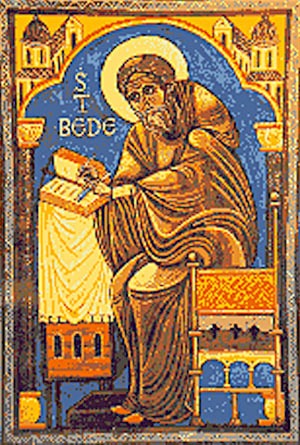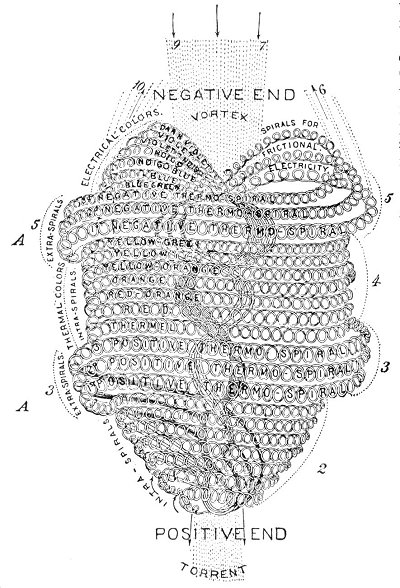These chapters are introductory to the main subject, the History of the English Church, which begins in Chapter 23 with the mission of St. Augustine in 597 AD. The reception of the Christian faith in the kingdom of Kent and the foundation of a national Church occupy the remaining chapters of the book. Various letters of Pope Gregory relating to the mission and his answers to the questions of Augustine are given at length ;and the Book concludes with a piece of Northumbrian history, Ethelfrid’s conquests of the Britons and the defeat of Aedan, king of the Dalriadic Scots, at Degsastan in 603 A.D.
BOOK II.— Book II opens with a biographical sketch of Gregory the Great, the founder of the Mission. This is followed by an account of Augustine’s negotiations with the leaders of the British Church with regard to the Paschal question and some other matters, his failure to win them over (a failure apparently largely due to his own want of tact in dealing with the susceptible Celtic temperament), his alleged prophecy of disaster and its fulfilment some time after at the battle of Chester. Then we have the consecration of Mellitus to London, as Bishop of the East Saxons, and Justus to Rochester (604 A.D.); the evangelization of the East Saxons by Mellitus; the death of Augustine and succession of Laurentius as Archbishop (no date is given; it may have been in 605); fresh attempts at union with the Celtic Churches, in which again we can perceive a failure of courtesy on the one side met by an obstinate pride on the other. The death of Ethelbert in Kent (616 A.D.) and that of Sabert in Essex, soon after, lead to a pagan reaction in both provinces; Mellitus apd Justus take refuge on the Continent; Laurentius, intending to follow them, is stopped by a vision which leads to the conversion of King Eadbald and the recovery of Kent for Christianity. Essex, however, continues to be pagan. On the death of Laurentius (619 A.D.), Mellitus succeeds to Canterbury and is himself succeeded by Justus (in 624). In Chapter 9 we enter upon a new development of the highest importance in the work of the mission. The marriage of Edwin, king of Northumbria, and the Kentish princess, Ethelberg, brings about the conversion of Northumbria through the preaching of Paulinus. The story is told in detail. Letters from Pope Boniface to Edwin and his consort are quoted at length, Edwin’s early history with its bearing on the great crisis of his life is related; finally we have the decisive debate in the Witenagemot at Goodmanham and the baptism of the king at Easter, 627 A.D. Through the influence of Edwin on Earpwald, king of East Anglia, that province is next converted, but on the death of Earpwald the people lapse into paganism for three years, till Christianity is finally established by the labours of Bishop Felix, under the enlightened King Sigbert, who had himself been drawn to the faith in Gaul.
Meanwhile, peace and prosperity reign in Northumbria, and Paulinus extends his preaching to Lindsey. He receives the pall from Pope Honorius, in accordance with the original intention of Gregory that the Bishop of York should rank as a metropolitan. At Canterbury, Justus is succeeded by Archbishop Honorius. Parenthetically we have extracts from letters, probably of the year 640 A.D., addressed by the Roman see to the Irish clergy on the Paschal question and the Pelagian heresy.
In Chapter 20 we have a dramatic climax to the book in the overthrow and death of Edwin at the battle of Hatfield in 633 A.D.; the devastation of Northumbria by the British king, Caedwalla, and Penda of Mercia; and the flight of Paulinus, taking with him Ethelberg and Eanfled to Kent, where he ends his life in charge of the Church of Rochester. His work in Northumbria seems for the time, at least, wholly overthrown. Only James the Deacon remains heroically at his post to keep alive the smouldering embers of the faith.
BOOK III.—Book III opens with the story of the apostasy of the Northumbrian kings and the miseries of the “Hateful Year,” terminated by the victory of Oswald at Heavenfield in 634 A.D. Christianity is brought again to Northumbria (635 A.D.) by the Celtic Mission, sent from lona at the request of Oswald, who nobly cooperates with Aidan in the work of evangelization. Aidan fixes his see at Lindisfarne. The mention of lona leads to a short account of the mission of St. Columba to the Northern Picts in 565 A.D., and incidentally of St. Ninian’s mission to the Southern Picts “long before the grant of Iona to St. Columba, and its constitution, the character of its monks and their error with regard to Easter. The characters of Aidan and Oswald are described; and the union of Deira and Bernicia under Oswald is briefly mentioned.

Moe is the founder of GnosticWarrior.com. He is a father, husband, author, martial arts black belt, and an expert in Gnosticism, the occult, and esotericism.




